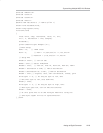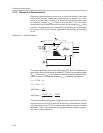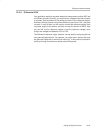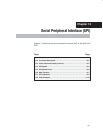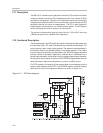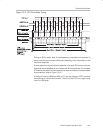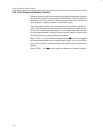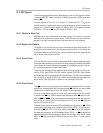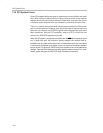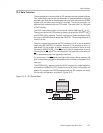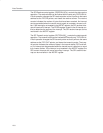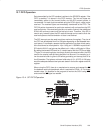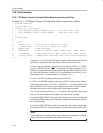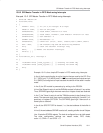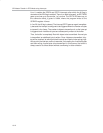
SPI Signals
13-5
Serial Peripheral Interface (SPI)
13.4 SPI Signals
The following paragraphs contain descriptions of the four SPI signals: master
in slave out (MISO), master out slave in (MOSI), serial clock (SCK), and slave
select (SS
).
The port register for P1.4, P1.5, P1.6 and P1.7 must be set (P1 = Fx
H
) to use
the SPI functions. Additionally, the pins must be setup as inputs or outputs us-
ing the Port 1 Data Direction register (P1DDRH, AF
H
). For master operation,
P1DDRH = 75
H
(drive SS pin), and slave P1DDRH = DF
H
.
13.4.1 Master In Slave Out
MISO is one of two unidirectional serial data signals. It is an input to a master
device and an output from a slave device. The MISO line of a slave device is
placed in the high-impedance state if the slave device is not selected.
13.4.2 Master Out Slave In
The MOSI line is the second of the two unidirectional serial data signals. It is
an output from a master device and an input to a slave device. The master de-
vice places data on the MOSI line a half-cycle before the clock edge that the
slave device uses to latch the data.
13.4.3 Serial Clock
SCK, an input to a slave device, is generated by the master device and syn-
chronizes data movement in and out of the device through the MOSI and MISO
lines. Master and slave devices are capable of exchanging a byte of informa-
tion during a sequence of eight clock cycles.
There are four possible timing relationships that can be chosen by using con-
trol bits CPOL and CPHA in the SPI control register (SPICON). Both master
and slave devices must operate with the same timing. The SPI clock rate select
bits, CLK[2:0], in the SPICON of the master device select the clock rate. In a
slave device, CLK [2:0] have no effect on the operation of the SPI.
13.4.4 Slave Select
The SS input of a slave device must be externally asserted before a master
device can exchange data with the slave device. SS must be low before data
transactions and must stay low for the duration of the transaction.
There is no hardware support for mode fault error detection. For the master
to monitor the SS
line, it either needs to poll the status of the SS signal or con-
nect it to INT
0 or INT1, which can generate an interrupt when the line goes low.
Due to this, it is reasonable for the master to drive P1.4 as the SS
signal for
control of the slave devices.
The state of the master and slave CPHA bits affects the operation of SS
. CPHA
settings should be identical for master and slave. When CPHA = 0, the shift clock
is the OR of SS
with SCK. In this clock phase mode, SS must go high between
successive characters in an SPI message. When CPHA = 1, SS
can be left low
between successive SPI characters. In cases where there is only one SPI slave
MCU, its SS
line can be tied to DGND as long as only CPHA = 1 clock mode is
used.



